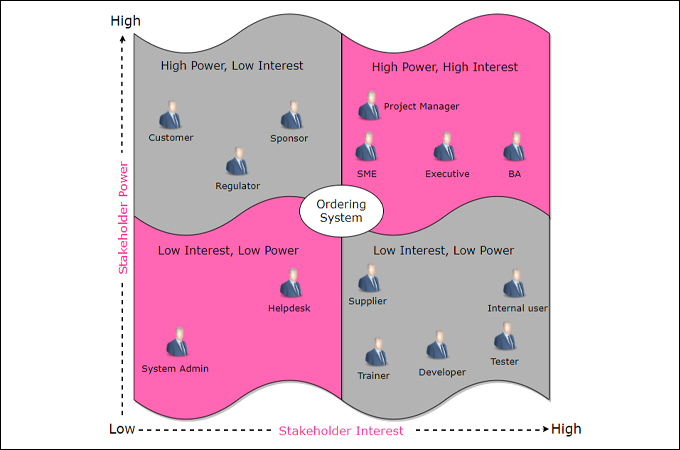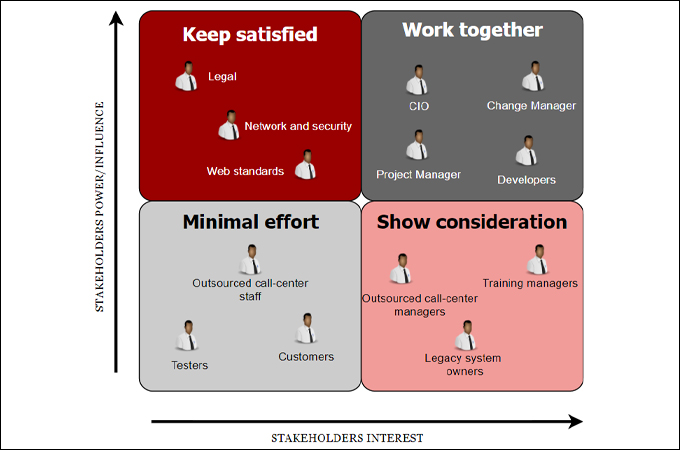
Stakeholders are individuals who are affected by or can influence a project. In any organizational project, stakeholder analysis is the initial stage of stakeholder management. It is the process of identifying and understanding stakeholders in a given project. Conducting this analysis early helps secure the support and approval of various stakeholders, increasing the likelihood of project success. To learn more about stakeholder analysis, read this document.
Stakeholder Analysis Definition and Example
What is a Stakeholder Analysis?
Stakeholder analysis is strategy primarily designed to identify and sort out individuals according to their level of participation. This can assist in understanding the stakeholders and their nuances that has impact on project risk. These individuals have a great influence in the project particularly in the aspect of planning, making decisions, implementing, and evaluation. Moreover, the analysis involves three major steps including identify, prioritize, and understand.
First, you need to identify who your stakeholders are or the people who are affected the most by the project. Then, the next step would be to sort them out according to the stakeholder’s importance and influence. Last step in stakeholder mapping or Analysis is understand where project managers will create stakeholders profile to win them. You can do this by determining what motivates your stakeholder, how does your project align with their priorities, and is it possible to change their view in a positive way.
The Most Common Stakeholders

In identifying stakeholders, you don’t just randomly pick individuals or departments. That is why we’ve listed the most common stakeholders involve the project context. Generally, these are the owners in a businesses, shareholders, customers, and project manager, or government. In stakeholder matrix, the stakeholders should be categorized according to their interests and impact. Furthermore, stakeholders can be classified into two groups- internal and external stakeholders.
Internal Stakeholders
Owners- this refers to the individuals who have exclusive rights over a business or firm.
Project Managers- a department head responsible for executing the tactics communicated by the owner.
External Stakeholders
Shareholders- is an external party who own shares of stock within an organization. Big decisions may come from them if they have more shares.
Customers- customers should be included in your stakeholder analysis matrix. Their buying products and satisfaction has a direct influence which will bring more leads and success to an organization.
Benefits of Stakeholder Analysis
Conducting stakeholder analysis is helpful in many ways. This is vital for the stakeholder management and project success. Here are the following reasons why this analysis is important.
- Provide opportunity to identify the problems ahead of time and address them
- Determine the key people that will give huge impact on the success of the project
- Manage negative views of the stakeholders regarding the project
- Help identify the interests of the stakeholders that will affect the project
- Make the information only accessible to key people involved in the project
- Figure out stakeholders buy-in, approval, and communication planning
Stakeholder Mapping Analysis Examples
To gain a more powerful understanding of your stakeholders, it’s usually helpful to visually create a stakeholder matrix. Below are some examples that you can use to analyze your stakeholders.
Ordering System Stakeholder Map

This one categorizes its stakeholders into four categories. From the illustration, you can tell that people with high power and high interest are the executive, project manager SME, and so on. These are the people that should be prioritized with your project’s success. The stakeholders with low power and low interest are the people that only need monitoring. Interpreting this stakeholder mapping, this group is located at the lower-left corner.
Software Project System Stakeholder Map

This sample also uses the approach of the power-interest grid with four similar categories as the above example. Finance, legal, networking, and security belong to high power and low interest. This means they don’t have great interest in your project you can use their influence to your advantage. Meanwhile, stakeholders with low power and high interest are helpful to achieve your goals. This stakeholder analysis matrix shows training managers, legacy system owners, and call center managers belong to this group. So keep them updated.
Conclusion
Conducting stakeholder analysis before even launching a project is critical to win the support of your stakeholders. Having this analysis will get all stakeholders on the same page about the objectives and execution plan. Hence, project’s success is more achievable.
Leave a Comment